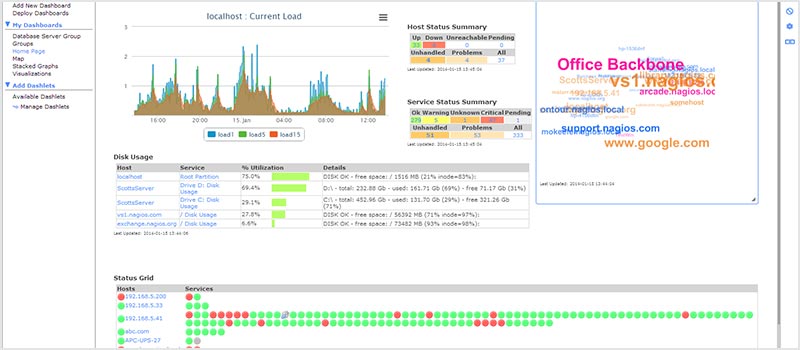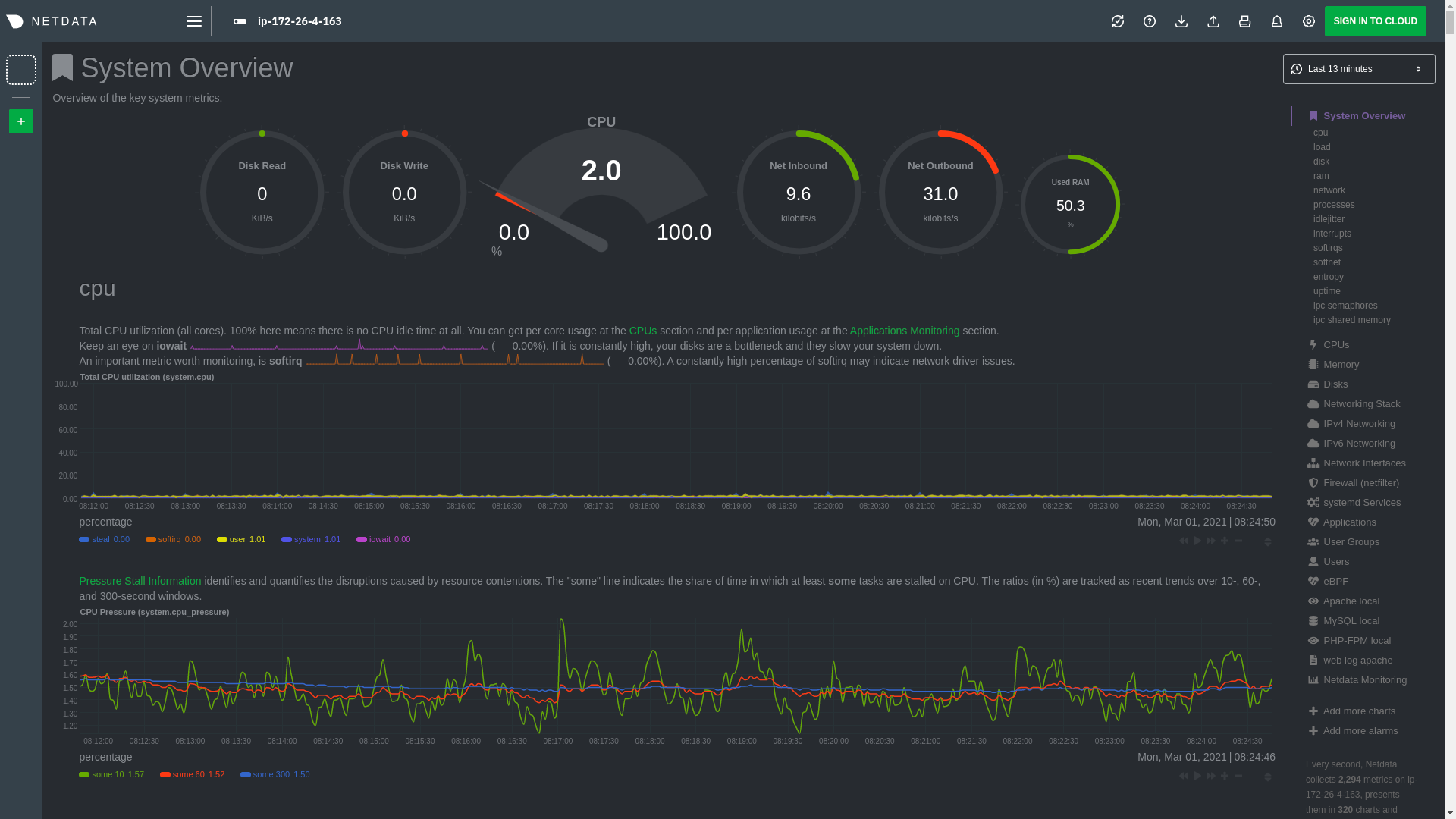
#LINUX WEB MONITOR PHP INSTALL#
Here, we will install the PHP server tools, PHP XML extension, and PHP-JSON extension packages. Install PHP Server on Fedora Linuxīy using the following DNF command-line in your Fedora Linux, you can install the PHP server on your system. Now, restart and enable the PHP server on your system. Yum -y install httpd git php php-json php-xml php-common Install PHP Server on CentOS and RHEL LinuxĪs we have already seen that the Red Hat Linux and CentOS users can install packages on the system by using the yum command now we will see how you can install the PHP server and PHP-common extension packages on your RHEL and CentOS. Now, restart and enable the server to see the impacts of the Server. Sudo apt install apache2 php git php-json php-common php-xml Use the following command-lines to install the Apache PHP server on Ubuntu. You can install and configure a web server in Ubuntu and Debian system by installing the Apache webserver. Install PHP Server On Debian/Ubuntuįor Ubuntu and Debian, we will use the Apache server to run the Linux dash.

#LINUX WEB MONITOR PHP HOW TO#
However, in this step, we will see how to install the primary PHP server on various Linux distributions. You can also use the Nginx or Apache server to configure the Linux Dash in some Linux distributions. Use the following command-line to install the Apache PHP server inside your machine. In this case, we will use the Apache PHP server on Linux. zypper install git Step 2: Install PHP Server on LinuxĪs Linux Dash uses the browser interface to visualize the system monitors, we have to install a local server inside our machine to host the Linux Dash. If you are an OpenSUSE Linux user, use the following command to install Git on your OpenSUSE Linux. SUSE and OpenSUSE Linux use the zaypper package manager to install any package inside the system. You can use the following terminal command-line to install the Git on an Arch system. Install Git on Arch and Arch-based Linux MachineĪrch and Arch-based Linux machines use the Package Manager (Pacman) tool to install and manage Arch Linux packages. If you’re using an old version of Fedora, the DNF command to install the Git. Use this command-line to install Git on Red Hat Linux Enterprise and CentOS. If you’re using the Fedora Linux, use the following command-line to install Git on your latest Fedora system. Install Git on Fedora, CentOS, and Red Hat Linuxįedora Linux uses the RPM commands to manage and install packages. sudo apt install gitĪfter the installation of Git is done, you can check the current version of Git on your system. If you are a Ubuntu/Debian user, you can run the following apt command on your machine to install the Git. You can install most Debian packages on your machine through the apt command.

On Ubuntu, the apt is a very powerful tool to manage packages. If you don’t have the Git installed inside your Linux machine, use the following methods to install the Git on your system. In this step, we will see how we can install the Git package on various Linux distributions.

However, in this post, we will use the git tool to install the Linux Dash on our Linux machine. You can find most of the Linux source codes and packages in GitHub. Git is the largest open-source platform where developers and coders share their projects and scripts. Some primary features of the package are given below. In this post, we will see how you can install, configure, and use the Linux Dash tool on your Linux distribution. The traditional Gnome system monitor is an excellent tool, but if you want to check up your system parameters in a wide range, I must say that Linux Dash is the perfect and handy tool for you. For better understanding, you can see a live demo of Linux Dash from here.
#LINUX WEB MONITOR PHP MAC#
But the Linux Dash has a vast amount of features that you need to observe regularly to check your storage health, CPU temperature, device MAC and IP connections, ping speeds, bandwidth usages and many more. By the Gnome monitoring tool, you can monitor the current system status, filesystem status, and network status. If you are using the Ubuntu or Debian distribution, you might be familiar with the Gnome System Monitor tool.


 0 kommentar(er)
0 kommentar(er)
